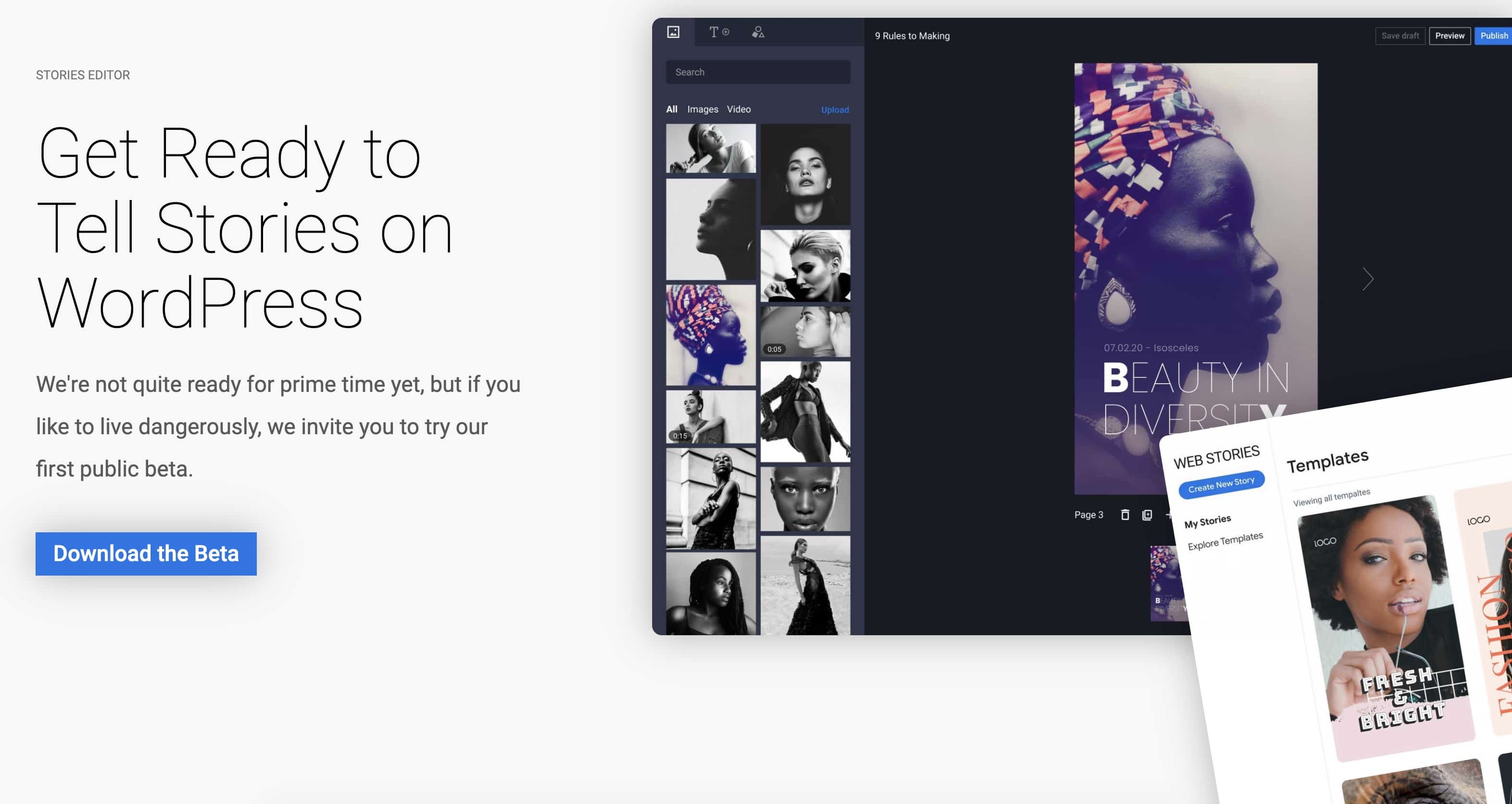
It’s Not Just You: Why your publishing technology stack is holding you back
You and your trusty publishing platform have been through a lot together. You’re deeply attached. It makes sense that you want to try everything possible to reignite the glory of the good old days.
But just because your original, custom website made you the accomplished publisher you are today, doesn’t mean it will carry you into the future.
Like all long term relationships, breaking up is hard to do. Yet don’t allow sentimentality to stand in your way of progress.
Is it time to break up with your website?
Sometimes, you just need to face the facts. You’ve changed. The industry has changed. It’s time to move on.
Deep down, you already know this. Yet somehow it feels more comfortable scrambling around your old, legacy CMS, hoping for some workaround, button or miracle to lift you out of the ever-increasing chaos.
Why?
Because it involves a tech project. And most people (even digital publishers) have an uncomfortable relationship with technology. In fact, a study by Chapman University revealed that technology is Americans’ second biggest source of fear. That’s right, digital disruption is more terrifying than death (and only slightly less scary than being in an earthquake).
However, if you want to get ahead as a modern media operator, it’s time to face your fears and reevaluate your most important relationship.
Signs your tech stack is holding you back
Do any of these scenarios seem familiar?
- Your editorial team is increasingly bogged down with website admin and processes
- Site performance is gradually dwindling
- You’re spending huge sums to achieve seemingly straightforward actions.
- Half of your tech budget is gone just keeping your website’s lights on
- You want to harness the power of AI – but have been told it’s not possible because of ‘the way your site is built’
- Your audience is growing but profit has flatlined
- Advertisers are requesting audience insight/data that you’re struggling to provide
- You’re running out of advertising inventory or have a nagging suspicion that you’re missing revenue opportunities
- Your business model has shifted significantly since you first launched
If you agree with any of these statements, it is time to seriously consider a technology overhaul.
For any publisher that’s outgrown their website, replatforming is often the fastest way to create significant and lasting change. It can literally yield results overnight.
Read how Science Alert achieved a 140% increase in traffic and ad revenue.
Why publishers fear tech projects
To be fair, it isn’t just the fear of technology that’s holding you back. It’s the fear of technology going wrong.
For most digital publishers, their reluctance to innovate centres around one (or more) of these ‘nightmare scenarios’:
- The cost blow-out
- The never-ending project
- The wrong agency
However, the wait-and-see approach is no route to success, as recent McKinsey research ‘Digital Strategy in a Time of Crisis’ demonstrates.
Mckinsey, ‘Digital Strategy in a Time of Crisis’
“Early adoption of digital technology early and at scale, combined with a heavy allocation of resources against digital initiatives and M&A, correlate highly with value creation”
What technology should publishers invest in?
While now is definitely the time to be investing in technology, it’s crucial not to over invest. Tech debt is easy to accumulate but far harder to clear.
Publishers are increasingly overwhelmed by tech options. It’s one of the reasons The Code Company start every project with a detailed discovery process. To give media owners a chance to fully explore their options, set priorities and prevent costly mistakes.
The art of succeeding as a media operator is knowing which technology to invest in. As Steve Jobs famously acknowledged, technology is merely a tool to facilitate the work of great people. It’s what you do with that tool, which makes all the difference
The truth is, technology should never be overwhelming or complicated.
So before introducing any new digital tool, take a moment and ask ‘how will this simplify my business?’ If it doesn’t, then you’re just adding to the chaos.
When working with media operators, our model has always been ‘anti-complexity’. How can we deliver the most impactful business results in the simplest possible way?
By ignoring the distractions of flashing lights and useless gadgets, we ensure that client budgets are spent only where truly needed. So your project always ends, there are never any surprise costs and all of the nightmare scenarios are avoided.
The most powerful transformations are usually the result of simple changes, smartly executed and aligned seamlessly to core business objectives.
Why traditional publishing goals are wrong
The first step to determining your technology needs is to define your business goals.
And this is what publishers typically tell us are their goals:
- More traffic
- More advertising
- More time
In the past, these would have been sensible balls to chase. However, the data revolution has transformed the publishing game.
Align technology to your publishing goals
Focusing on traffic isn’t the route to scaling your digital publishing site. Potential advertisers don’t care about how many people visit your site. They want to know who visits, how they engage with content and how valuable they are to their particular brand.
To this ever increasing data-focused client base, vanity metrics like traffic don’t even scratch the surface.
It’s time to think beyond selling advertising and instead focus on how you can harness technology to create mutually beneficial partnerships with brands.
And when you get your stack right, you’ll automatically have more time.
Here’s what your goals should be:
- Goal 1: Better audience data: The more you know about your audience, the more you can improve and refine your content. This leads to deeper engagement (see Goal 2) and gives you the ammunition to create compelling client opportunities (see Goal 3)
- Goal 2: Deeper audience engagement: An engaged audience is a valuable audience. That’s why now is such a great time to be a niche publisher. Having a small, active community is where the future opportunities lie for media operators.
- Goal 3: More compelling marketing opportunities for clients: If you’ve achieved Goals 1 and 2, Goal 3 will occur naturally. When you’re able to offer smart, personalised marketing solutions to clients, you’re suddenly a far more attractive prospect.
The publishing tech game-changers:
Now that you’ve established your goals, it is safe to start looking at your tech stack.
When working with digital publishers that are trying to scale, these are the first game-changers we tackle:
Content Management System
You’re a content-based business, so it doesn’t take a genuis to realise the importance of your content management system (CMS). A rockstar CMS is the backbone of all successful digital publishers. It is (or it should be) your single source of truth, and be adaptable enough to accommodate all of your editorial and advertising requirements.
If you’re a growing media operator, you can’t go past WordPress. Well you can, but you’ll probably regret it pretty quickly. Dozens of other platforms have tried to challenge WordPress, but nothing has ever really come close to matching its flexibility, reliability and integration capabilities.
Just ask VOX Media, which dropped its own CMS, Chorus earlier this year and moved to WordPress.
R
Even if you’re a large-scale publishing empire, there’s still no reason to build your own platform. Proprietary CMS’s are rigid, prohibitively expensive and threaten to leave you behind if (or more likely when) technology continues to evolve at its current pace.
What people often don’t understand is that WordPress can be optimised for complex workflows. We do it all the time. It’s just that publishing platforms are complex beasts and it is rare to find developers that have the capabilities (or time) to fully answer your specific brief. And so, through a series of workarounds, the result is a wildly complex publishing architecture.
What about SaaS publishing platforms like Substack and Medium?
If you’re a blogger or simply dabbling in the world of publishing, SaaS platforms are great. But plug-and-play tech stacks are a major red flag for serious publishers. Do you really want your entire business relying on a $50 plugin? A large part of our work at The Code Company involves rescue operations with publishers that learnt this the hard way.
READ MORE: The three biggest mistakes made by publishers when building or replatforming their website
Hosting Platforms
A slow website is the fastest way to lose audiences and advertisers. That’s why your choice of hosting infrastructure is so important.
When selecting a server, you basically have two options:
- Self-managed hosting
- Managed hosting platforms
Historically, due to the complexity of their needs, most enterprise publishers opted to build their own hosting setup. However, managed platforms have evolved at such pace that almost all of the key requirements of growing publishers are now taken care of.
READ MORE: What is the best hosting solution for digital publishers?
Managed hosting options are particularly straightforward if you’re using WordPress. When it comes to reliability, security, backups, caching and updates, the capabilities of platforms like WP Engine are second to none. And you’ll most likely save money.
We were reminded of the merits of hosting platforms recently when working with a new publishing client. By simply switching them to a managed service, we saved them more than $200,000 a year.
Ad Tech
Our team recently met a niche publisher who had built such an engaged audience community that brands were banging down their door to advertise. A publishing dream come true? You’d think. However, there was one problem. They had run out of inventory. There were literally not enough ad units on their website to accommodate client requests. Their profit line was falling, yet they were turning clients away.
The first thing we did to turn this unfortunate situation around was bring in our AdOps team to correctly install Google Ad Manager and build a smart WordPress integration. This gave editorial and advertising teams full control over campaign management and targeting. And crucially, it led to an immediate ROI and a sizeable increase in client revenue.
The focus of publishing is rapidly shifting from traffic to targeting, so it’s inevitable that clients will demand increasingly complex advertising solutions. To maximise future revenue opportunities, now is the time to engineer your AdTech for success.
Data Collection Tools
Are you sitting on a goldmine of data? Probably. Most digital publishers are, yet few realise it. And even fewer know how to use it to grow their business.
WPP AUNZ CEO Jens Monsees made this point at Mumbrella 360 when he likened digital data to high school sex.
“Everybody talks about it, few are doing it and nobody does it right. There is more than talk, you have to understand it. Where is this data sitting? How do I make it accessible and make sense of it in real time? How many clients have a decent data strategy and the IT infrastructure underneath it to harvest and make sense out of the data?”
With the right technology, it’s possible to gain deep behavioural insight that tells you what audiences are doing over a longer period of time.
A good place to start is by configuring your ESP (email service provider) to gain insight into the content categories an individual user clicks on. This will enable you to customise your visitors’ experience and provide highly targeted content and client marketing opportunities.
“Behaviorally targeted ads are more than twice as valuable and twice as effective as non-targeted online ads”
AI-powered pubishing
Something else that every publisher is talking about, is AI. And while there is not yet a Swiss Army knife/one-size-fits-all AI publishing tool, there are plenty of individual options for WordPress publishers.
Some current AI-features include:
- SEO-friendly content creation
- Text-prompted image creation
- Headline-suggestion tools
- Plagiarism checks
- Brand voice checks
- Content summarisation
- WordPress block generation
- AI-assisted workflows
Read more about how publishers can unlock the power of AI
Some parting thoughts
As a digital publisher, you’re in a long-term relationship with technology.
But is your current website giving you everything you need to succeed? Or are you resisting change because it’s familiar and comfortable?
Remember, no great accomplishments were ever achieved in a comfort zone.
Yet innovation needn’t be stressful. With the right technology partner and an anti-complexity mindset, you and your publishing platform could well live happily ever after.

